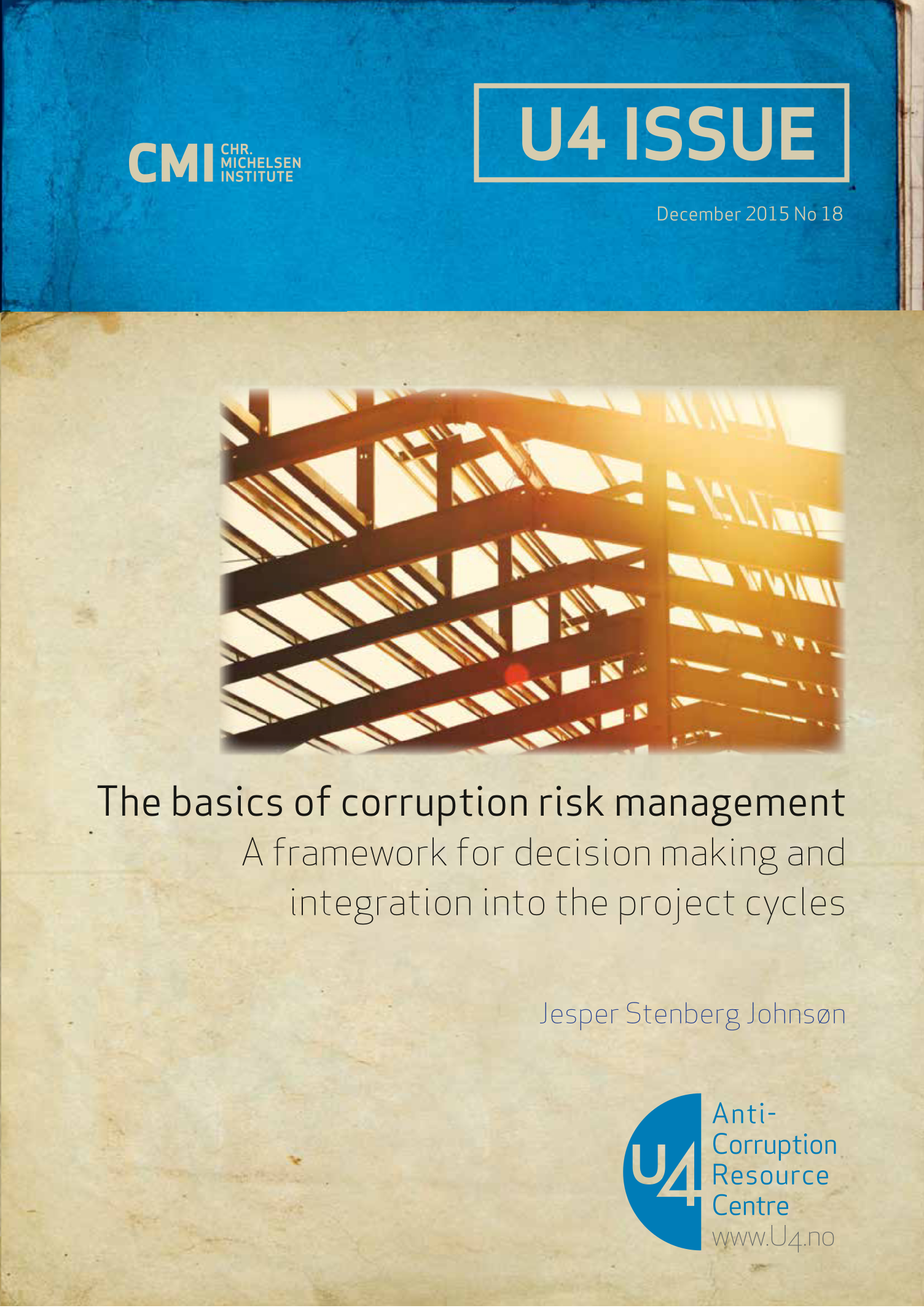U4 Issue
The basics of corruption risk management: A framework for decision making and integration into the project cycles
Aid agencies need better systems to identify, assess, and mitigate corruption risks. Risk assessments should consider two main dimensions of an act of corruption: probability and expected impact. Cost-effectiveness considerations determine whether corruption risks should be treated, and how. Aid agencies cannot focus on own fiduciary and reputational risk, but must make investment decisions based on the magnitude of risk that different types of corruption pose for development objectives. The aim is not to eliminate corruption but to optimise development results. Agencies need information on the severity of corruption risks and the effectiveness of counter-measures throughout the project cycle in order to properly analyse and manage risks. To help agencies move beyond front-end risk assessment, the paper shows how different risk mitigation tools can be applied across the project cycle.

Cite this publication
Johnsøn, J. 2015. The basics of corruption risk management: A framework for decision making and integration into the project cycles. Bergen: Chr. Michelsen Institute (U4 Issue 2015:18) 29 p.
Disclaimer
All views in this text are the author(s)’, and may differ from the U4 partner agencies’ policies.
This work is licenced under a Creative Commons Attribution-NonCommercial-NoDerivatives 4.0 International licence (CC BY-NC-ND 4.0)

